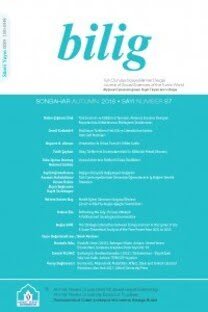Bir Sözlüksel Bilmece: Redhouse’un Kayıp Türkçe Sözlüğüne Ne Oldu?
Sir James William Redhouse 1811-1892 , Türk sözlükçülüğü denildiğinde akla ilk gelen isimlerden birisidir. Osmanlı Türkçesi üzerine hazırladığı sözlükleri ve gramer çalışmaları bugün hâlâ önemini koruyan Redhouse’un hayatı ve eserleri üzerine yapılan çalışmalar az sayıda ve yetersizdir. Bu az sayıdaki çalışmada Redhouse’un kayıp olarak belirtilen bir sözlüğünden bahsedilmekte, sözlük hakkındaki bilgilere ise sadece, yazarın dönemin Hariciye Nazırı Fuad Paşa ve Londra Sefiri Kostaki Musurus Paşa’ya yazdığı ariza mektup lardan ulaşılabilmektedir. Kayıp olarak nitelenen sözlüğün dört ciltlik kısmı tarafımızdan bulunmuş olup eser ile ilgili yeni bilgilerin paylaşılması ihtiyacı doğmuştur. Bu amaçla kaleme aldı- ğımız makalede, mevcut kaynaklar ve Redhouse’un arizaları üzerinden söz konusu eser hakkında bilgi verilmiş ve bulunan dört ciltlik kısmın genel bir tanıtımı yapılmıştır. Ayrıca, ciltlerin bulunuşuna ve ciltler hakkında dikkat çekici noktalara değinilmiştir
A Lexical Conundrum: What Happened to Redhouse’s Lost Turkish Dictionary?
Sir James William Redhouse 1811-1892 is one of the names that comes to mind when Turkish lexicography is the issue. The dictionary and grammar studies of Redhouse which were prepared on Ottoman Turkish still preserve their significance today. Our information is quite limited since there are not many studies on his life and works. A dictionary which is considered to be “lost” is mentioned in the studies conducted about Redhouse. The information about this dictionary can be accessed only over the letters written by Redhouse to Fuad Pasha, the Minister of Foreign Affairs and Kosthaki Musurus Pasha, the ambassador of London. 4 volumes of this dictionary of Redhouse were found by us and it was required to share this information with the world of science. In this article written as based on this reason, information is provided about the mentioned work over the available resources and the letters of Redhouse and a general introduction of these 4 volumes are given. Moreover, the discovery of the volumes and some interesting points about the volumes are also mentioned.
